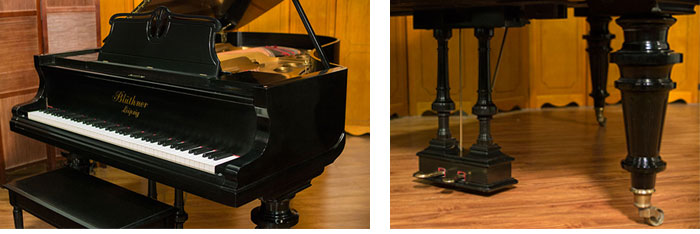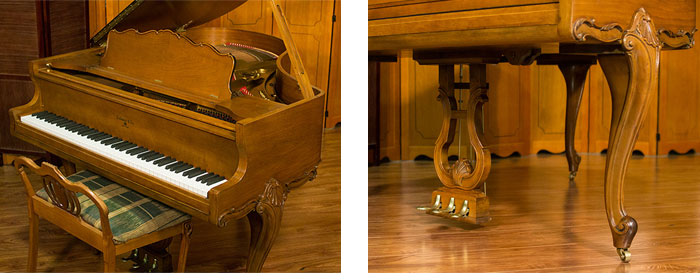This is a very common question from piano owners. After all, the idea of calling someone in to tune your piano can be costly. Wouldn’t it be easier if you could learn to tune your piano yourself?
Every now and then I get comments from someone saying they are going to try to tune their own piano. They take out a pair of plyers or a locking wrench and think, “It can’t be that hard!”. Tuning a piano takes much more skill than you may think. Attempting to tune a piano in this manner can cause serious damage to your piano.
I personally learned how difficult it is to tune a piano when I was a young boy. I used to see my father touch up his piano in his studio and one day when I was alone there I thought it would be fun to try to tune one string on the piano just to see what it was like. I got out his tuning wrench and tried to tune one note. But once I struck the key I heard two notes coming out and I thought I had destroyed the piano! I sheepishly called him into the room and he very easily got the piano back in tune. If you have an interest in tuning your piano, I recommend that you acquire the right tools and try to tune just one string. You will gain a deep respect for your piano technician.
So can you tune your own piano? If you get the proper tools (tuning wrench, felt strip, rubber wedges) and appropriate software, you can attempt to tune your piano. However, only a good tuner is able to provide a tuning that will hold for a reasonable amount of time.
The Right Type of Tuning Wrench
1. The head should be removable since the best wrenches are built that way.

2. 2. Make sure the tuning wrench has a star head. A square head will go over the pin, but you will not be able to place the wrench in an ergonomic position in order to finesse the string. You absolutely need a star hex head to properly tune your piano

3. You can buy a cheap tuning hammer that will fit your basic requirements, but you are much better off getting high quality tools if you plan on tuning your piano or even doing touch-up.
Software Can Help
Luckily we live in an age where there is software available to assist in tuning your piano. I have seen professional piano tuners utilizing software on their phones! Technology has come a long way. Years ago when seeing a piano tuner come in with a strobe tuner, you knew that they were hacks. But today, the best software models the specific piano you are tuning and can offer good results in the right hands.
It’s Not Just Getting a Note in Tune
There are many aspects that go into a proper tuning that only an experienced tuner or technician can learn through the process of tuning hundreds of pianos. Getting a note in tune is just the first step. If you watch a great tuner you will notice how they strike the same note over and over again at a very loud volume to make sure the notes will hold. There are many techniques utilized by fine tuners in order to be assured that the notes will hold beyond the first hard blow.
Every string has a tremendous amount of tension on it and setting the strings properly is a very difficult task. Strings have what is called speaking length and non-speaking length areas to them. In between these sections you have points of tension. Setting a string requires you to deal with the tension points and how they will even out once you strike the string.

Once you strike the note the tension will even out and the string will immediately go out of tune. There is always a section in the back of the string where the tension is divided between another point of tension or point of termination.
As you can imagine, getting a string to set properly and hold tuning is a very complex task and is something that takes a true professional to finesse and get just right. There are also over 220 strings on most pianos, and every one will have to be set properly for the piano to stay in tune – it’s a very time consuming task!
Another thing to remember is that when you go up into the higher treble notes the sound will not last very long. So, it’s very difficult to hear or for a tuning application to register. Even an experienced tuner can have issues hearing the correct pitch in the extreme high and low registers on a piano.
Can You Do It?
If you plan on tuning your own piano you should be prepared for a lot of hard work and practice before you can reliably get your piano in tune. You will need to perform dozens of tunings before you start to become competent at it.
This article isn’t meant to scare anyway away from trying to tune a piano. But you should be aware that a piano tuner’s job is not as easy as it might seem. There is a lot of work and experience that goes into learning this craft properly and that’s why it’s both a time consuming and expensive process when done properly.
The good news is that you can learn to touch-up the tuning on your piano. This can prolong the integrity of the tuning on your piano. It is also a lifesaver if you ever have a broken string replaced since they need to be tuned 5-6 times before they hold.
I hope this is helpful and if you have any questions about this topic or any other, please email me Robert@LivingPianos.com for more information.












